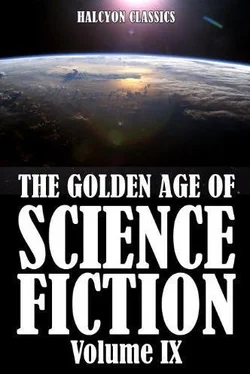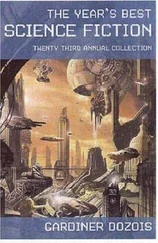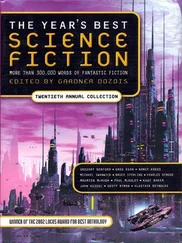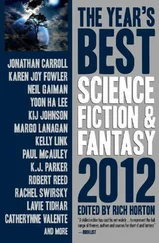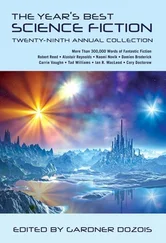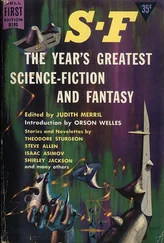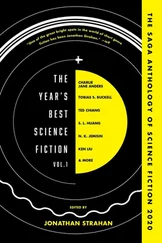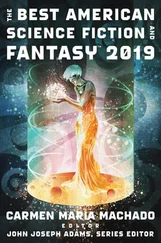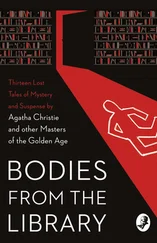[Illustration: Drawn by T.E.R. Phillips Plate XV
MARS, AS SEEN THROUGH A 12-INCH TELESCOPE ON 16TH AUGUST, 1909
The south polar snow-cap is seen at the top, and as it is early June on this part of Mars, the snow-cap has become small. The dark line across it is a wide rift, the ice having commenced to break up at this part; and the dark shading round it is water from the melting snow. The circular light area near the centre is “Hellas,” and the dark wedge-shaped area is “Syrtis Major.” The protuberance usually seen on the eastern side of Syrtis Major has this year almost disappeared, and but little detail is visible anywhere.]
For instance, M. Antoniadi, of Juvisy Observatory, near Paris, has published a very interesting account of his own observations with the fine Meudon refractor, which has an object glass 32.7 inches in diameter; and he has also furnished several beautifully executed drawings of what he has seen. The most noticeable new features observed were two large detached pieces of the south polar snow-cap, the altered shape of the Solis Lacus and other dark areas, numerous dark rounded spots on the dark areas, much detail along the lines of the canals, and the observation of scattered markings instead of lines.
M. Antoniadi lays great stress on the advantages of large telescopes; and, whilst making frank admission that the drawings of Professor Lowell show the outlines of the Martian details more accurately than the drawings of any other observer, he dissents entirely from his views respecting the actuality of the canal lines.
With regard to M. Antoniadi’s observation of dark rounded spots, it has been suggested by another writer that these are volcanoes, and, moreover, that the canal lines are really cracks in the solid ice covering frozen oceans and seas. These contentions involve the supposition that Mars is still in the stage when volcanic action is prevalent, and also that what have hitherto been supposed to be desert lands are really fields of ice. Mars has passed far beyond the stage of volcanic activity; and the theory does not account for the ochre colour of the frozen oceans, which are exactly the same colour as our deserts appear when viewed from a great distance, for the sandstorms so frequently observed, nor for the general absence of any indications of frost over a large portion of the Martian surface. It is also very difficult to imagine the existence of a profuse growth of vegetation along cracks in solid ice; and I am afraid this theory, like many others, fails to fit in with the observed facts.
I may remind my readers that the Professor suggested that many more dark rounded spots would, under favourable conditions, be discovered on the dark areas of the planet, and he has stated what they are.
As a result of his recent observations, M. Antoniadi has boldly declared that the supposed canal lines are really separate spots and markings which, when seen with instruments of lesser power than the one he used, appear to be lines, the network of canal lines being an illusion. He contends that the markings he has seen are beyond the power of Professor Lowell’s telescope to resolve, and that what he has seen forms an unanswerable objection to the canal theory and stops all discussion!
This argument has, however, been fully met in this book by anticipation; and, as will be seen later on, Professor Lowell completely refutes it and shows that M. Antoniadi is mistaken. It has also been pointed out that, if we could secure perfect seeing, the lines might really appear as separate markings, and that apparent breaks and irregularities are exactly what we might expect to find in connection with canals. I gather from a recent remark made by Professor Lowell that he also holds this view.
Moreover, a discreet silence is observed with regard to the progress of vegetation on Mars being from the poles towards the equator, instead of from the equator towards the poles, as is the case on our earth.
This mode of progression can only be accounted for by the flow of water from the poles, and such flow extending beyond the equator involves the artificial propulsion of the water, as the flow is contrary to gravitation.
Professor Lowell’s statements as to this peculiar growth of the vegetation do not depend upon the results of a few casual observations, for he has given the matter most systematic and prolonged attention, and noted upon hundreds of charts the dates when the vegetation has first appeared in various places and latitudes after the passage of the water down the canals.
This is such a hard nut for the opponents of the canal theory to crack, that I am quite prepared to learn that all these careful observations are merely illusions.
Professor Hale, of Mount Wilson Observatory, in California, has taken some photographs of Mars which do not show any canal lines; and these have been eagerly seized upon as another proof that the canals have no existence.
Unfortunately, these photographs do not show many well authenticated details which are seen with comparative ease, nor the new details seen by M. Antoniadi. It is, therefore, no matter of wonder that they do not show the much fainter canal lines. If the absence of the canal lines from the photographs is proof that the canals do not exist, then the photographs must still more emphatically prove that these much more conspicuous details—which have been seen and drawn by M. Antoniadi and scores of other observers—are also illusions and have no objective existence. Those who seek the support of these photographs for their views must be left to extricate themselves as best they can from the dilemma in which they are now placed in regard to the observations and drawings of those highly skilled observers.
The photographs were taken with a sixty-inch telescope, and possibly this very large aperture was not stopped down sufficiently to secure on the photographic plates such very fine detail as the canal lines; on the other hand, the atmospheric conditions at the moments of exposure of the plates may have been unfavourable for good definition. However good the photographs may be, the deductions drawn from them are erroneous.
Against such purely negative evidence—which never affords good ground for argument—we must set the positive evidence of Professor Lowell’s numerous photographs, which do show many of the canal lines and also confirm the drawings of observers.
Professor Schiaparelli, who has been appealed to on the subject, still maintains the objectivity of the canal lines which he was the first to discover, and repudiates the suggestion that the new photographs supply any evidence against them. He remarks that during the last thirty years many other astronomers, using more perfect telescopes than his, have observed and drawn these canal lines, and have taken photographs which reproduce an identical disposition of the lines. He adds that a collective illusion on the part of so many astronomers is impossible, and that the photographs which do show the canals cannot be illusions.
Professor Lowell controverts M. Antoniadi’s claim to have proved that the lines are non-existent, and that the only markings are small separate shadings which are illusively seen as lines. He points out that what M. Antoniadi has seen is exactly what would be seen when using a very large telescope, and that it indicates poor seeing instead of good definition. He remarks that when using such large instruments, which are so much more affected by atmospheric conditions than smaller ones, the diffraction rings round a star (which should appear as complete concentric circles) begin to waver, then break up into fragments—a sort of mosaic—and finally end in an indiscriminate assemblance of points. In certain kinds of bad seeing the parts may seem quite steady, but the fact that the mosaic exists is proof positive of poor seeing. What happens to the rings in such circumstances must also happen to fine lines! the mosaic effect seen by M. Antoniadi is therefore “the exact theoretic effect that a large aperture should produce on continuous lines, such as the canals, and always does produce in the case of the rings in the image of a star!”
Читать дальше
